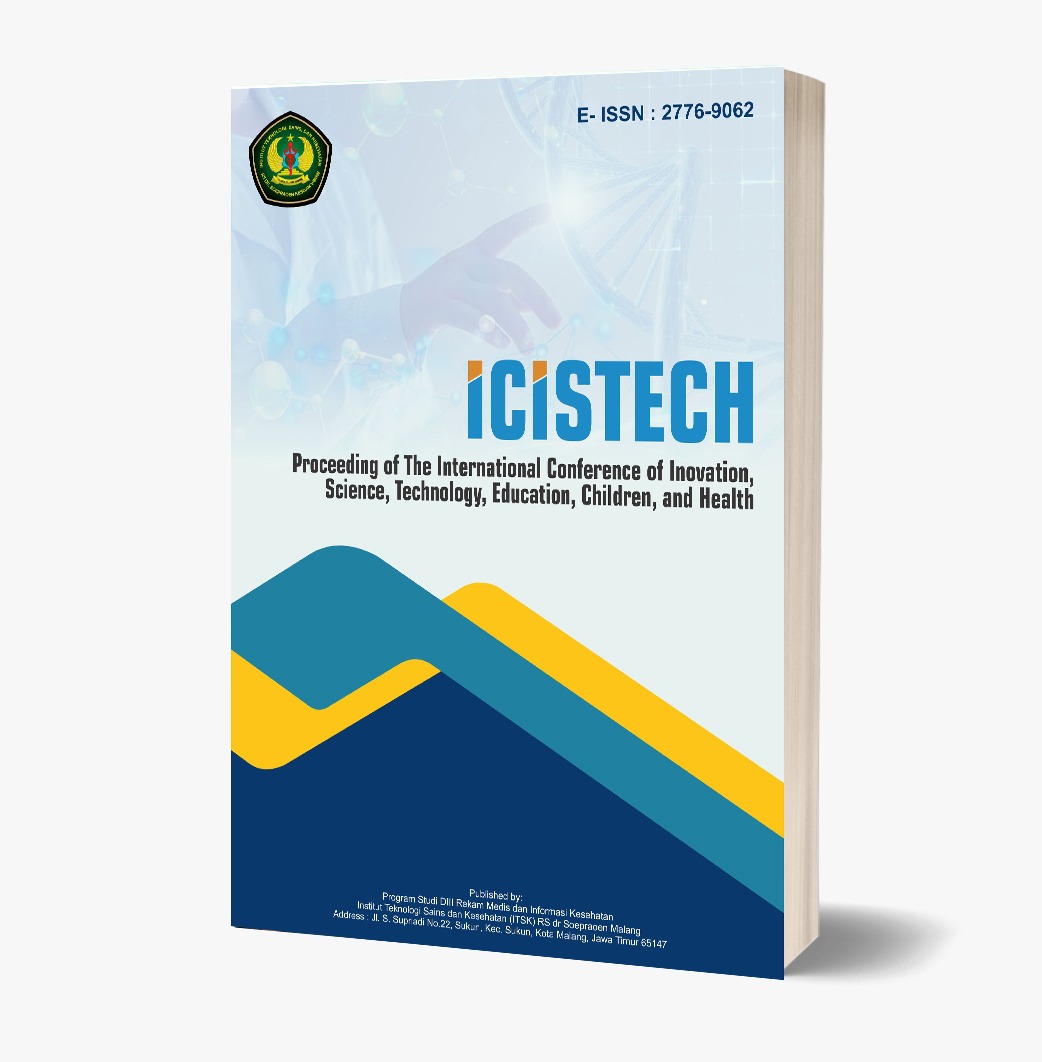Education Equity For The Remote, Disadvantaged Youth: Acceleration Of The Human Capital Development In NTB
DOI:
https://doi.org/10.62951/icistech.v4i2.79Keywords:
Education Equity, Disadvantaged Youth, Acceleration, Human Capital DevelopmentAbstract
Indonesia's youth hold promise for economic growth, but disadvantaged youth in West Nusa Tenggara (NTB) face hurdles in education and employment. It is not surprising if the NTB's Human Development Index (HDI) lags the national average, reflecting educational shortcomings. There are still many youths lack access to quality education and often lack undergraduate degrees due to language barriers. While scholarship programs like Bidikmisi exist, financial limitations discourage participation, the NTB government's Beasiswa NTB program offers financial aid, but resource constraints limit its reach and scholarship amounts. Fact shows enrolment rates in higher education are significantly lower in rural areas and for less affluent youth. Thus, the NTB government acknowledges these disparities but needs further action to address them. This is a qualitative research examining the NTB government's strategies through a self-administered survey and document analysis. Findings depict that there are two key programs; Beasiswa NTB, which supports high-achieving students domestically and internationally, and Rumah Bahasa, which offers language training, particularly English, to increase access to international scholarships. The government can address these disparities through targeted programs, scholarships, mentorship, and collaboration with NGOs and private entities. The NTB government collaborates with universities abroad through shared funding to support disadvantaged students. Limited funding, reaching remote areas, and ensuring adequate financial support are challenges for the NTB government. While NTB’s scholarship programs and collaborations promote educational equity, further efforts are required to bridge the gap and empower disadvantaged youth.
References
Adeniyi, F., Fagbamigbe, A., Adebola, O. G., Dukhi, N., Fagbamigbe, S. O., & Uthman, A. O. (2021). Exploring the socio-economic determinants of educational inequalities in diarrhoea among under-five children in low- and middle-income countries: A Fairlie decomposition analysis. Archives of Public Health, 79, Article 10. https://doi.org/10.1186/S13690-021-00639-8
Aldini, U. (2020). Pengelompokan provinsi di Indonesia berdasarkan indikator mutu pen-didikan sekolah menengah pertama tahun 2016–2018 menggunakan model based clustering (Doctoral dissertation, Universitas PGRI Adibuana Surabaya).
Badan Statistik NTB. (2022). Retrieved from https://ntb.bps.go.id/
Barus, E. N., & Tarmizi, H. B. (2021). Analysis of factors affecting human development in-dex in the city of Binjai.
Beasiswa NTB. (n.d.). Retrieved from https://www.lppntb.com/program/beasiswa-ntb
Becker, G. S. (2009). Human capital: A theoretical and empirical analysis, with special ref-erence to education. University of Chicago Press.
Brida, N. T. B. (n.d.). Retrieved from https://brida.ntbprov.go.id/
Brissett, N., & Mitter, R. (2017). For function or transformation? A critical discourse analy-sis of education under the Sustainable Development Goals. Journal for Critical Edu-cation Policy Studies, 15(1).
Collins, J. (2009). Social reproduction in classrooms and schools. Annual Review of An-thropology, 38, 33–48.
Dawes, N. P., & Larson, R. (2011). How youth get engaged: Grounded-theory research on motivational development in organized youth programs. Developmental Psychology, 47(1), 259–269. https://doi.org/10.1037/a0020729
Dian, M. S., Nur, A. binti A., Arifin, N., & Yusuf, M. A. (2022). Implementation of decision support system for scholarship recipients at Bank Indonesia. CJE, 1(1), Article 10. https://doi.org/10.56134/cje.v1i1.10
DUKCAPIL. Retrieved from https://dukcapil.kemendagri.go.id/
Fadillah, N., & Setiartiti, L. (2021). Analysis of factors affecting human development index in special regional of Yogyakarta. Journal of Economics Research and Social Sci-ences, 5(1), 88–104.
Fisal, T., Mohammed, A., & Omer, B. (2023). Human development index: Determining and ranking the significant factors. International Journal of Engineering Research & Technology (IJERT), 12(03).
Fleischhauer, K. J. (2007). A review of human capital theory: Microeconomics. University of St. Gallen, Department of Economics Discussion Paper, (2007-01).
Guangrong, D. (2024). Address educational inequality: Current state, causes, and strategies. Journal of Education, Humanities and Social Sciences. https://doi.org/10.54097/2katp774
Humaira, U. H., & Nugraha, J. (2018). Analysis of factors affecting the human development index in West Kalimantan Province using panel data regression. Eksakta: Journal of Sciences and Data Analysis, 97–105.
Informasi Terbaru Tentang Beasiswa NTB. (n.d.). Retrieved from https://beasiswa.ntbprov.go.id/informasi/
Jenis Beasiswa NTB. (n.d.). Retrieved from https://beasiswa.ntbprov.go.id/jenis-beasiswa/
Jirada, P., & Takahashi, Y. (2012). On the determinants of inequality in education. https://doi.org/10.15027/33824
Karismawan, P., & Firmansyah, M. (2018). Analisis kinerja pembangunan provinsi Nusa Tenggara Barat dalam aspek kesejahteraan, ketimpangan, pembangunan manusia, pendidikan dan kesempatan kerja. Journal of Economics and Business, 4(1), 1–17.
Kemampuan Bahasa Inggris Warga Indonesia Di Bawah Rata-rata. (2018, December 14). Republika Online. Retrieved from https://news.republika.co.id/berita/pjq0na349/kemampuan-bahasa-inggris-warga-indonesia-di-bawah-ratarata
Lala, A. S. (2022). Analisis pengaruh faktor morbiditas, tingkat pengangguran terbuka (TPT), dan angka partisipasi murni (APM) terhadap indeks pembangunan manusia di Provinsi DKI Jakarta periode 2017-2021. Journal of Management and Social Sci-ence. https://doi.org/10.55606/jimas.v1i4.95
Liang, Y. (2022). Different time frames, different futures: How disadvantaged youth project realistic and idealistic futures. Social Problems, spac053.
Mausam, K., Garg, P., & Chowdhury, I. K. (2022). An overview of educational inequality in India: The role of social and demographic factors. Frontiers in Education. https://doi.org/10.3389/feduc.2022.871043
McMahon, W. W. (2018). The total return to higher education: Is there underinvestment for economic growth and development? The Quarterly Review of Economics and Fi-nance, 70, 90–111.
Miller, C. (2003). Working with disadvantaged youth: Thirty-month findings from the eval-uation of the Center for Employment Training replication sites. US Department of Labor.
Mishra, S. (2012). Pierre Bourdieu cultural social capital. Research Journal of Humanities and Social Sciences, 3(2), 292–296.
Müller, D., Ringer, F., & Simon, B. (Eds.). (1989). The rise of the modern educational sys-tem: Structural change and social reproduction 1870-1920. Cambridge University Press.
Ni, M., & Sukartini. (2022). Determinants of the human development index (HDI) in Indo-nesia, 2014 - 2021. Media Trend. https://doi.org/10.21107/mediatrend.v17i2.14610
NTB BICARA - 1000 Cendikia Mendunia [Television series episode]. (2023, May 30). YouTube. https://www.youtube.com/watch?v=gTlZMxXuoBs
Nurlina, N., Ahmad, N., Wijaya, R., & Asnidar. (2023). Analisis determinan indeks pem-bangunan manusia di Indonesia tahun 1990-2021. Samudra Ekonomi dan Bisnis. https://doi.org/10.33059/jseb.v14i2.7287
Purwanto, M., Dadang, S., & Sihabudin, S. (2021). Using KNN algorithms for determining the recipient of Smart Indonesia Scholarship Program. JKT, 7(2), Article 4962. https://doi.org/10.35143/JKT.V7I2.4962
Saigaran, N. G., Karupiah, P., & Gopal, P. S. (2015). The capability approach: Comparing Amartya Sen and Martha Nussbaum. Proceedings of Universiti Sains Malaysia.
Santi, D. P., Fadilla, M., Andi, A., Yulkifli, Y., Resti, F., Afrini, D., & Rini, E. (2024). The workshop on cattle breeding and fattening in an effort to increase the human devel-opment index in Sijunjung Regency. Pelita Eksakta. https://doi.org/10.24036/pelitaeksakta/vol7-iss1/220
Savvides, A., & Stengos, T. (2008). Human capital and economic growth. Stanford Univer-sity Press.
Statistik, B. P. (2021). Statistik pendidikan provinsi Nusa Tenggara Barat 2021.
Sumarni, S., & Didiharyono, D. (2023). Application of principal component regression in analyzing factors affecting human development index. Jurnal Varian. https://doi.org/10.30812/varian.v6i2.2366
Svara, J. H., & Brunet, J. R. (2005). Social equity is a pillar of public administration. Jour-nal of Public Affairs Education, 11(3), 253–258.
Teixeira, P. N. (2014). Gary Becker’s early work on human capital–collaborations and dis-tinctiveness. IZA Journal of Labor Economics, 3, Article 1.
Weiss, Y. (2015). Gary Becker on human capital. Journal of Demographic Economics, 81(1), 27–31.
Wobbekind, R. L. (2012). On the importance of education. Business Economics, 47(2), 90–96.
Wooldridge, B., & Gooden, S. (2009). The epic
Downloads
Published
How to Cite
Issue
Section
License
Copyright (c) 2024 Proceeding of The International Conference of Inovation, Science, Technology, Education, Children, and Health

This work is licensed under a Creative Commons Attribution-ShareAlike 4.0 International License.













